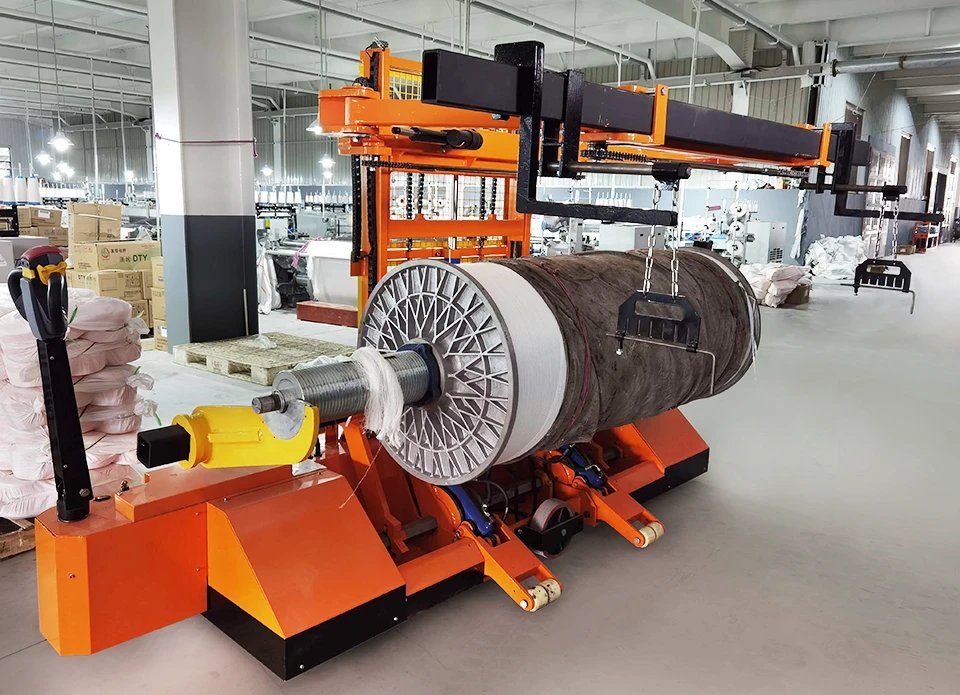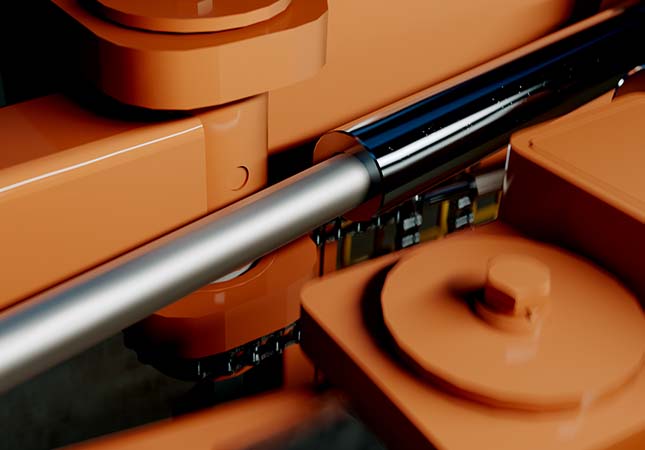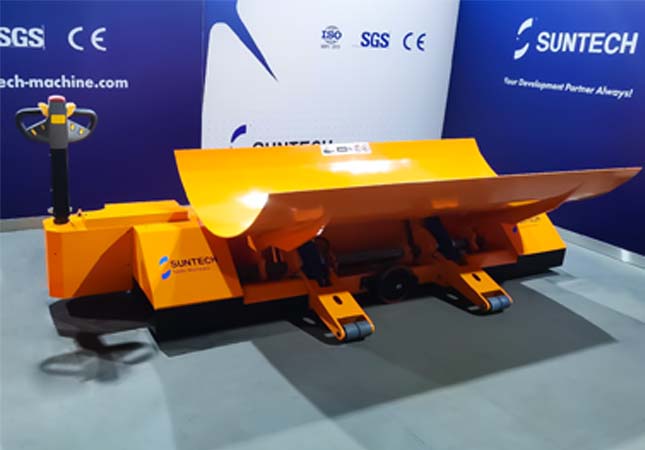Motorized and hydraulic systems play integral roles in transmitting power and enabling precise control across diverse applications within textile machinery. These systems find application in motorized warp beam trolleys, hydraulic beam trucks, and other material handling equipment, facilitating efficient power transmission and smooth operation.

Main Differences
Motorized and hydraulic systems, despite sharing a common purpose, exhibit distinct differences across several crucial aspects:
1. Power Source:
Motorized systems rely on motorized energy, employing motorized motors to convert it into mechanical energy. In contrast, hydraulic systems employ hydraulic fluid, pressurizing it through hydraulic pumps and cylinders to generate mechanical energy.
2. Control:
Motorized systems utilize motorized signals for control, regulating motor speed and direction. On the other hand, hydraulic systems adjust the pressure and flow of hydraulic fluid to control the movement of hydraulic cylinders or actuators.
3. Responsiveness:
Motorized systems typically exhibit superior responsiveness, swiftly reacting to motorizedal signals. Hydraulic systems, due to the time required for fluid flow and pressure changes, are generally slower to respond.
4. Efficiency:
Motorized systems excel in energy conversion efficiency, minimizing losses during the transformation of motorizedal energy into mechanical energy. In contrast, hydraulic systems often experience energy losses due to factors such as friction, heat dissipation, and other inherent characteristics.
5. Cost:
Motorized systems tend to be more cost-effective in terms of installation and maintenance. They require fewer components and have fewer wear parts. However, hydraulic systems offer greater durability and longevity, making them a more favorable long-term investment.
By understanding these distinctions, one can choose between motorized and hydraulic systems based on the specific requirements and trade-offs within textile machinery applications.
Types of SUNTECH Motorized Beam Trolley
ST-MBT-02I:
ST-MBT-02I, the latest addition to SUNTECH's STelego series, is an advanced motorized beam trolley designed to streamline various processes such as bottom beam transportation, weaving loom insertion, and weighing of weaving beams. With a robust capacity of up to 1800kg and an additional 300kg loading capacity for harnesses, it offers exceptional versatility.

Customizability is a key feature of the ST-MBT-02I, as its width can be tailored to meet specific requirements. The default width of 170-340cm ensures compatibility with weaving machines without the need for size modifications. Compared to manual labor and traditional forklift equipment, this motorized warp beam trolley stands out for its remarkable flexibility.
ST-MBT-01II:
SUNTECH presents the ST-MBT-01II, a motorized beam lift trolley with a cradle-type design for effortless beam loading. Building upon the foundation of a standard electric warp beam lift trolley, this model offers enhanced convenience and efficiency.
The ST-MBT-01II is engineered to handle looms ranging from 1.7m to 3.4m in width. With a maximum loading capacity of 1800kg and a compact structure, it excels in operating within confined spaces. It proves suitable for transporting and inserting bottom beams in single or twin beam types, as well as facilitating batch picking from the ground and smooth transportation.

Both the ST-MBT-02I and ST-MBT-01II exemplify SUNTECH's commitment to delivering cutting-edge solutions for the textile industry, enhancing productivity and simplifying operations in various weaving applications.
Conclusion
Motorized and hydraulic systems possess distinct advantages and limitations, and selecting between the two depends on the unique demands of the application. Motorized systems excel in scenarios necessitating rapid and precise control, whereas hydraulic systems shine in applications requiring substantial power and durability. Ultimately, the decision between these options hinges on a careful evaluation of performance, cost considerations, and overall reliability, striking the right balance to meet specific requirements effectively.




